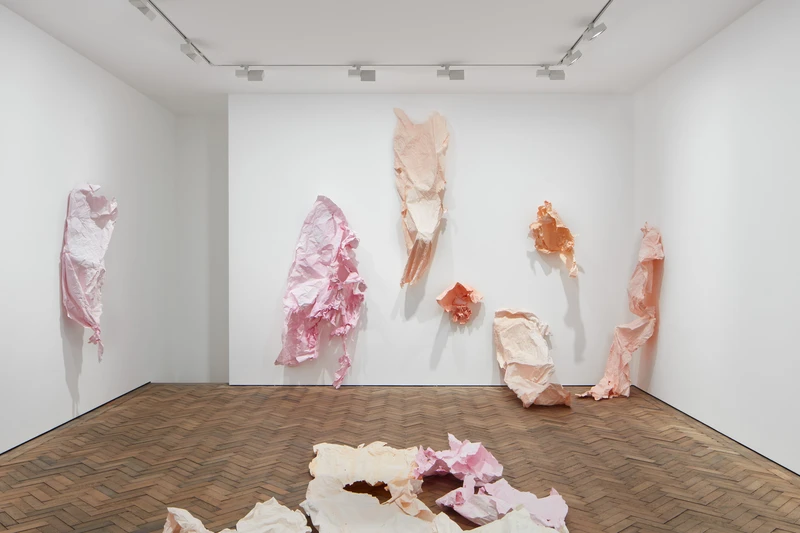Karla Black
28 Jan-26 Feb 2022
PV 28 Jan 2022, 12-6pm


Modern Art is pleased to announce a solo exhibition of new work by Karla Black. This is Black’s fourth solo exhibition with Modern Art.
For the past twenty years, Karla Black has been making sculptures that explore the physical and psychic properties of the materials that populate her everyday life. Black’s sculptures come from modest means: paper, cellophane, cosmetics and other household, ready-to-hand substances (bath bombs, Gaviscon, soil, polystyrene, Sellotape, and Vaseline, for example) are her materials of choice, employed for their visual and tactile properties, as opposed to any overt referential significance. These materials are processed and worked through to the limits of their physical parameters, becoming unrecognizable and utterly unique forms, shapes and structures that hover mid-air from the ceiling, attach to walls or other features of the space, or cover the surface of the ground or walls in chalky, pastel colours. In this way, Black’s sculptures respond to the space they are in; the pre-existing visual and spatial features of the architecture becoming cues for Black’s treatment of it, which can be playful, overwhelming, exploratory and effusive.
Karla Black’s exhibition for Modern Art is comprised of a series of new sculptures made from soaked and dried cartridge paper and watercolour inks. Using only red, orange and yellow inks blended together, the works are each bathed in varying shades of pink or peach. The paper is left to soak, and then hung out to dry over various household objects from which the sculptures gain their shapes and forms. As such, Black’s new works are more pared back than is typical of her sculptures, and the exhibition as a whole seems to question what is most necessary and essential in her work, keeping only the bare bones. This economy of means is adopted by Black both through a reflection upon the past two decades of her practice characterised by acceleration, but also because of the material and psychical conditions of living and making that have been redefined by the pandemic.